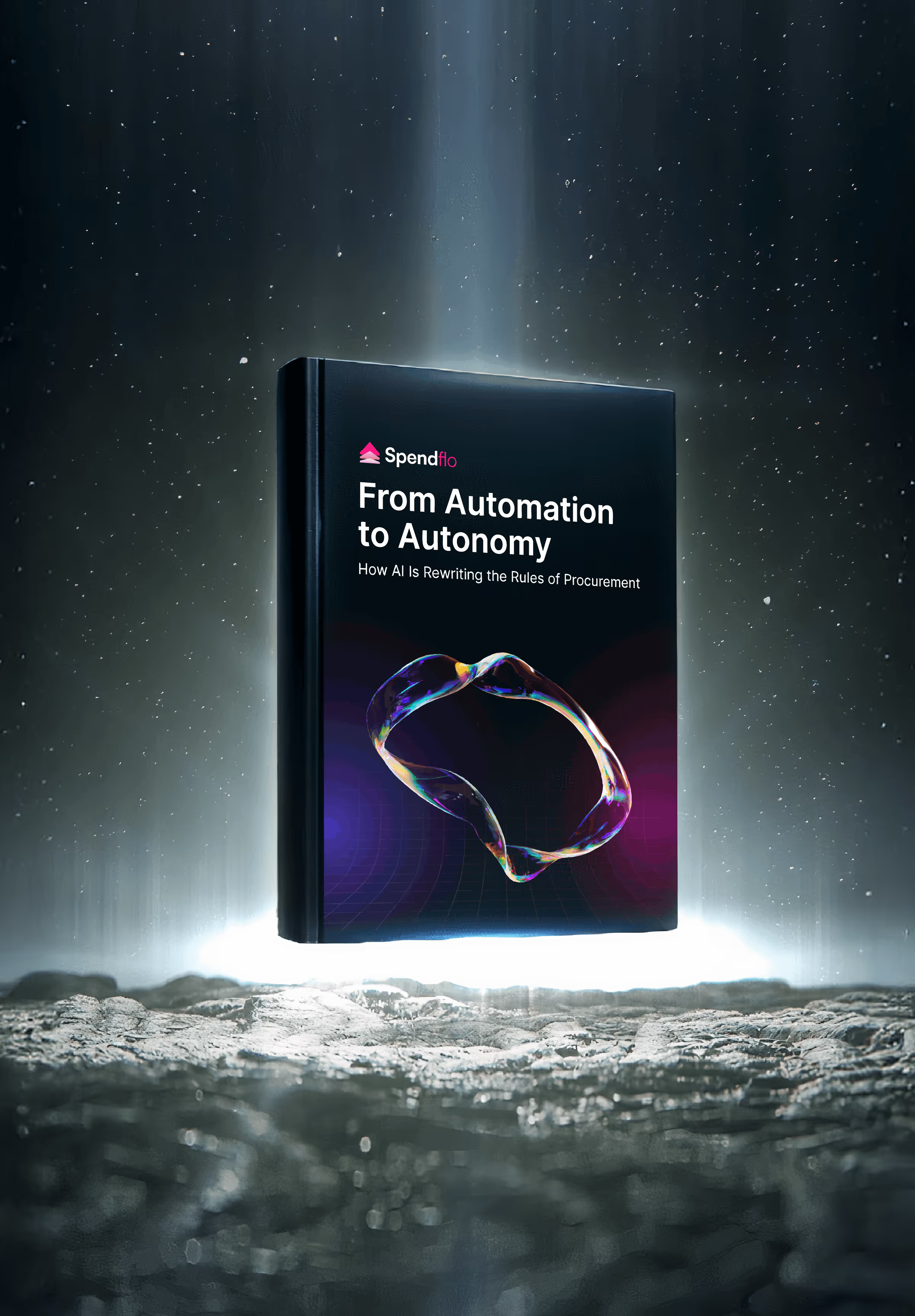

11 Ways To Use ERP To Enhance Supply Chain Management (SCM)

11 Ways To Use ERP To Enhance Supply Chain Management (SCM)
Learn 11 ways ERP boosts supply chain performance by improving visibility, automation, and decision-making across procurement, logistics, and inventory.


According to a recent Deloitte report, nearly 79% of businesses struggle with supply chain visibility, often because their systems don’t talk to each other. This lack of coordination leads to missed opportunities, higher costs, and slower delivery cycles.
That’s why it’s worth looking closely at how Enterprise Resource Planning (ERP) systems can change the game. When used effectively, ERPs bring together procurement, production, and delivery into one connected process, giving businesses the visibility and control they need to stay competitive.
What is ERP in Supply Chain Management?
ERP in supply chain management is software that connects key operations like procurement, inventory, logistics, and production in one system. It gives real-time visibility, improves coordination, and helps teams track goods, forecast demand, manage suppliers, and process orders efficiently.
What’s the Difference Between ERP and SCM?
Supply Chain Management (SCM) refers to the strategic planning and execution of the flow of goods, information, and finances from sourcing and production to delivery. Enterprise Resource Planning (ERP), on the other hand, is the centralized transaction processing engine that connects SCM functions like inventory and procurement to finance, manufacturing, and HR.
While both systems aim to improve efficiency, they serve different purposes within an organization. Here’s a quick comparison of ERP vs SCM:
Core Components of an ERP System
Modern ERP systems bring together essential business functions under one platform, improving collaboration and data accuracy across departments. These ERP modules ensure every team from finance to production works from the same source of truth.
Financial Management and Accounting
This ERP module manages all financial transactions, from budgeting and forecasting to accounts payable and receivable. By centralizing financial management and accounting, organizations gain real-time visibility into cash flow, expense tracking, and compliance, helping leaders make faster, data-driven decisions.
Manufacturing and Production
The manufacturing and production module streamlines planning, scheduling, and quality control. It connects demand forecasting with inventory and procurement, ensuring materials and resources are available when needed. This integration reduces waste and supports just-in-time production cycles.
Sales and Customer Relationship Management (CRM)
The CRM component helps businesses manage leads, track customer interactions, and improve sales performance. When linked with inventory and billing data, it enables accurate order fulfillment and a better customer experience.
Human Resources Management (HRM)
The HRM module simplifies employee management from recruitment and onboarding to payroll and performance reviews. By automating HR workflows, organizations save time and ensure compliance with internal policies and regulations.
Business Intelligence and Analytics
Business intelligence and analytics tools within ERP systems transform raw data into actionable insights. Dashboards and reports provide visibility into performance trends, helping leaders spot inefficiencies and plan strategically.
Challenges of Implementing ERP in SCM
While ERP systems bring efficiency and visibility to supply chain management, they also come with certain limitations that organizations must address for successful adoption.
1. Lack of Collaboration and User Adoption
Challenge: A major ERP limitation is poor collaboration across departments. Many systems focus on process automation but fail to promote effective communication between finance, procurement, and operations teams. As a result, visibility across the supply chain suffers, and decision-making becomes fragmented.
Solution: Encourage company-wide adoption through hands-on training and role-based dashboards. Choose ERP solutions that integrate collaboration tools and make communication intuitive. Cross-departmental visibility should be a key selection criterion when evaluating vendors.
2. Rigidity and Limited SCM Agility
Challenge: Traditional ERP systems can be rigid, making it difficult for businesses to adapt to rapid market changes. This lack of SCM agility affects responsiveness to disruptions like supplier delays, demand fluctuations, or sudden cost changes hindering supply chain visibility from an adaptability standpoint.
Solution: Opt for modular ERP software that supports customization and cloud-based scalability. Modern systems with AI-driven analytics and workflow automation allow organizations to stay agile without losing control or compliance.
3. Data Security and Privacy Risks
Challenge: In the shift toward cloud-based ERPs, data security and privacy have become pressing concerns. Sensitive financial and supplier data stored online can be vulnerable to breaches, compliance violations, or unauthorized access.
Solution: Implement strict access controls, data encryption, and multi-factor authentication. Choose ERP vendors that are compliant with international standards such as ISO 27001 or SOC 2 and regularly audit for potential vulnerabilities.
Core Value: How ERP Supports Modern Supply Chains
Modern ERP software plays a key role in helping supply chains stay efficient, data-driven, and connected. It improves real-time visibility, speeds up decision-making, and supports agility and responsiveness critical traits for businesses operating in dynamic markets.
Here’s how ERP adds measurable value to supply chain management:
Improves Real-Time Visibility Across the Supply Chain
ERP systems give supply chain leaders a complete, real-time view of operations from procurement and purchase orders to delivery and returns. With accurate data on inventory levels and vendor performance, businesses can predict demand better and reduce delays.
Enhances Decision-Making with Analytics and Intelligence
Centralized data combined with advanced analytics and intelligence tools helps teams make faster, data-backed decisions. Managers can spot inefficiencies, optimize order quantities, and reduce the risks of overstocking or missed shipments.
Drives Agility and Responsiveness
By unifying all key functions, ERP improves agility and responsiveness across the supply chain. Teams can adapt quickly to demand shifts, supplier issues, or logistics bottlenecks keeping operations steady even during disruptions.
Streamlines Operations and Reduces Manual Work
ERP automation eliminates repetitive tasks like order entry, invoice matching, and stock updates. This not only cuts down on manual errors but also gives teams time to focus on higher-impact initiatives.
Supports Compliance and Risk Management
With built-in audit trails and compliance tracking, ERP systems help organizations meet industry regulations. They also monitor supplier and logistics performance to identify potential risks early.
Improves Supplier and Customer Collaboration
ERP improves collaboration by enabling shared access to order statuses, delivery schedules, and performance metrics. This transparency strengthens relationships with suppliers and customers alike.
The 6-Step ERP Implementation Lifecycle
Implementing an ERP system is a major initiative that requires careful planning, collaboration, and execution. Each phase of the process ensures a smooth transition from legacy systems to a fully functional ERP environment. Below are the key ERP implementation steps every organization should follow:
Step 1: Planning and Selection (Defining Requirements)
This first step sets the foundation for a successful ERP rollout. Businesses need to define their goals, key requirements, and success metrics before choosing an ERP solution. The selection process should align with business needs, scalability, and budget to ensure long-term success.
Step 2: Data Migration (Moving Old Data)
Data migration is one of the most critical stages. It involves transferring existing data such as supplier records, financial information, and inventory levels into the new ERP system. Proper cleansing and validation during this step prevent data errors that could impact future operations.
Step 3: Installation and Configuration (Customizing)
Once the ERP software is selected, it’s installed and configured to fit organizational workflows. Customization ensures the system aligns with existing processes while maintaining standardization where possible. Integration with tools like CRM or SCM platforms happens here.
Step 4: Testing and Training (UAT and User Adoption)
Thorough testing ensures the system functions as expected. During this phase, User Acceptance Testing (UAT) helps identify gaps or bugs before launch. Equally important is user adoption training employees to use the ERP effectively so they can confidently manage daily tasks post-deployment.
Step 5: Go Live and Post-Implementation Support
After successful testing and training, the ERP system moves into production. The Go Live and Support phase focuses on real-time monitoring, troubleshooting, and ensuring users are comfortable with the new system. Ongoing vendor or IT support helps resolve issues quickly and maintain system performance.
Step 6: Continuous Optimization
Even after go-live, ERP implementation is an evolving process. Regular updates, performance reviews, and feedback collection ensure the system stays aligned with business growth and new technology trends.
11 Actionable Ways ERP Transforms Supply Chain Performance
ERP systems are built to streamline complex operations - and the supply chain is one of the biggest beneficiaries. From procurement and production to inventory and logistics, ERP helps integrate, automate, and optimize every step. When used effectively, it can transform your supply chain into a faster, leaner, and more resilient function.
Below are 11 practical ways ERP enhances supply chain management - from improving visibility to cutting operational costs.
1. Centralizing Supply Chain Data
Goal: Get everyone on the same page with real-time, accurate supply chain information.
Having a centralized view is crucial for supply chain efficiency. It enables faster decisions, better demand forecasting, accurate reporting, and smoother coordination between procurement, warehousing, production, and logistics. It also reduces the risk of errors caused by duplicate entries or misaligned data.
Here’s how ERP helps centralize supply chain data:
- Stores supplier details, order histories, inventory levels, and shipping information in a single, unified database
- Ensures real-time updates across departments to eliminate confusion and delays
- Provides role-based dashboards to give stakeholders quick access to the data they need
- Automatically syncs changes across all modules to maintain consistency and accuracy
2. Improving Forecast Accuracy
Goal: Plan better with data-driven demand forecasting and real-time insights.
ERP systems analyze historical sales, market trends, and real-time inventory levels to generate accurate demand forecasts. These forecasts help supply chain teams prepare for fluctuations, avoid stockouts, and reduce excess inventory.
Here’s how ERP helps improve forecast accuracy:
- Uses historical sales and seasonal patterns to predict future demand
- With predictive analytics capabilities, ERP enables smarter planning
- Supports business intelligence by turning raw data into actionable forecasting insights
- Combines sales, production, and inventory data for more accurate planning
- Adjusts forecasts dynamically with real-time input from the field
- Enables better coordination between sales, production, and procurement
3. Enhancing Supplier Collaboration
Goal: Build stronger vendor relationships with better visibility and communication.
ERP creates a shared platform for communication between your team and suppliers. With access to order updates, payment statuses, and delivery schedules, suppliers can plan better, respond faster, and meet expectations more reliably.
Here’s how ERP enhances supplier collaboration:
- Gives suppliers real-time access to order status, shipment timelines, and approvals
- Reduces delays by automating purchase order communication
- Tracks supplier performance and delivery history for better evaluations
- Improves transparency, helping build long-term trust and reliability
4. Optimizing Inventory Levels
Goal: Keep the right stock at the right time with smarter inventory control.
ERP helps monitor inventory levels in real time, highlighting what needs restocking and what’s overstocked- improving overall inventory management. With smarter stock management, companies reduce carrying costs while ensuring products are available when needed.
Here’s how ERP optimizes inventory:
- Tracks real-time inventory levels across multiple warehouses and locations
- Triggers automatic restocking based on reorder points and lead times
- Flags excess inventory to reduce holding costs and free up cash flow
- Helps forecast demand to align inventory with actual needs
5. Streamlining Procurement Processes
Goal: Simplify sourcing and purchasing with automation and better insights.
ERP systems in procurement automate tasks like vendor selection, purchase requisition approvals, and PO generation. This speeds up the buying cycle, reduces manual errors, and ensures compliance with internal business processes and policies.
Here’s how ERP streamlines procurement:
- Automates purchase requisition approvals and PO creation
- Tracks vendor quotes, contract terms, and delivery schedules in one place
- Helps manage supplier contracts by centralizing documentation
- Ensures compliance by enforcing budget checks and approval workflows
- Improves sourcing decisions with historical cost and performance data
6. Enabling Real-Time Tracking
Goal: Track goods and workflows at every stage of the supply chain.
ERP offers real-time visibility into orders, shipments, inventory movements, and production statuses. This helps businesses respond faster to delays, shortages, or disruptions - keeping operations agile and informed.
Here’s how ERP enables real-time tracking:
- Monitors inventory movement from warehouse to customer in real time
- Integration with Internet of Things (IoT) devices enhances real-time tracking
- Tracks order progress, production status, and supplier deliveries
- Sends automated alerts for delays, shortages, or issues
- Helps teams respond proactively instead of reacting late
7. Boosting Production Planning
Why: Align production with demand and resource availability for maximum efficiency.
ERP systems coordinate production schedules with material availability, labor capacity, and sales forecasts. This ensures manufacturing teams work with accurate timelines and minimal disruptions.
Here’s how ERP boosts production planning:
- Aligns production schedules with demand forecasts and inventory data
- Tracks material availability and alerts for shortages in advance
- Balances workloads by coordinating labor, machinery, and shift plans
- Reduces downtime by identifying bottlenecks and inefficiencies
8. Automating Order Management
Goal: Speed up order fulfillment with fewer errors and better coordination.
ERP automates every step of the order process - from sales order entry to invoicing and shipping. It helps teams fulfill orders faster, track status in real time, and reduce manual errors that lead to delays or customer complaints.
Here’s how ERP automates order management:
- Auto-generates sales and purchase orders based on inventory or demand
- Syncs order details across sales, warehouse, and finance departments
- Sends real-time order updates to customers and internal teams
- Minimizes order entry errors through predefined templates and rules
9. Ensuring Compliance and Traceability
Goal: Stay audit-ready and track every detail across your supply chain.
ERP systems record every transaction and movement across the supply chain, creating an audit trail that supports regulatory compliance and product traceability - especially in industries like food, pharma, and electronics.
Here’s how ERP ensures compliance and traceability:
- Tracks batch numbers, serial numbers, and expiry dates for full product traceability
- Maintains detailed logs of procurement, production, and distribution activities
- Helps meet standards like ISO, FDA, or GDPR with automated reporting
- Sends alerts for non-compliance or documentation gaps
10. Reducing Operational Costs
Goal: Cut waste and unnecessary spend through better planning and automation.
With improved accuracy, automation, and visibility, ERP helps eliminate inefficiencies that often drive up costs - like overstocking, production delays, or duplicate purchases.
Here’s how ERP reduces costs:
- Optimizes procurement to avoid overbuying and vendor penalties
- Reduces labor hours spent on manual tracking and approvals
- Lowers holding costs with better inventory control
- Prevents lost sales by avoiding stockouts or late deliveries
11. Supporting Scalable Growth
Goal: Grow confidently with systems that can handle more orders, data, and complexity.
ERP systems grow with your business. Whether expanding into new markets, adding suppliers, or handling more SKUs, ERP ensures your supply chain operations scale smoothly without creating bottlenecks.
Here’s how ERP supports scalability:
- Handles higher transaction volumes without added complexity
- Adapts to multi-location or global supply chain operations
- Adds new users, modules, or integrations as business needs grow
- Ensures consistent processes even as teams and workflows expand
Choosing The Right ERP System For Your Supply Chain Management
Not all ERP systems are created equal - especially when it comes to handling supply chain complexity. The right ERP should align with your business size, industry needs, and long-term growth goals. A mismatch can lead to unnecessary features, higher costs, or operational bottlenecks.
Here’s what to consider when choosing an ERP for supply chain management:
- Supply Chain‑specific Features: Look for capabilities like demand forecasting, inventory optimization, procurement automation, and supplier portals. Cloud-based ERP solutions also offer scalability, easier integrations, and access from anywhere, which are crucial for modern supply chains.
- Ease of Integration: Ensure it integrates well with your existing tools, such as CRM, warehouse management systems, or logistics platforms.
- Scalability: Your ERP should be able to grow with your operations - handling more SKUs, locations, and users without lag. It should also adapt to changes in the business environment, such as regulatory shifts or market expansion
- User Experience: A clean interface and intuitive design help drive user adoption and reduce training time.
- Vendor Support: Strong implementation support, ongoing training, and better customer experience make a big difference post-launch.
Choosing the right ERP is a strategic decision - one that can define how efficiently your supply chain operates in the long run.
How to Choose the Right ERP Vendor for Your Supply Chain
Selecting the right ERP solution is one of the most important technology decisions for any supply chain team. The right system can strengthen collaboration, improve visibility, and boost efficiency across procurement, logistics, and finance. The wrong one can create silos, inflate costs, and slow operations.
Here’s what to consider when choosing the right ERP vendor for your business:
1. Supply Chain–Specific Features
Look for features that directly support your operations such as demand forecasting, inventory tracking, procurement automation, and supplier portals. A cloud-based ERP system offers scalability, easier integrations, and remote access, making it a strong fit for global or fast-growing supply chains.
2. Deployment Type: On-Premise vs Cloud
When evaluating solutions, compare on-premise vs cloud ERP options. On-premise systems offer more control but require higher upfront investment and IT resources. Cloud-based ERP solutions, on the other hand, provide faster implementation, automatic updates, and flexible pricing ideal for businesses seeking agility.
3. Ease of Integration
Ensure the ERP connects seamlessly with your existing tools like CRM, warehouse management, and logistics platforms. Integration eliminates data silos and enables real-time visibility across departments.
4. Scalability and Flexibility
Choose a system that can grow with your business. The ERP should support additional SKUs, regions, and users as you scale without performance issues. It should also adapt to regulatory changes or new supply chain models with minimal disruption.
5. User Experience and Adoption
A user-friendly interface promotes faster adoption and reduces training time. Look for intuitive dashboards, simple navigation, and role-based access that make everyday tasks easy for your teams.
6. Vendor Support and Reliability
Strong vendor support is essential for a smooth rollout. Evaluate each vendor’s onboarding process, customer service, and post-implementation assistance. Ongoing support ensures your ERP continues to deliver value as your business evolves.
How Spendflo Helps with ERP in Supply Chain Management
Managing ERP systems across multiple vendors can feel overwhelming. Between complex licensing terms, renewal cycles, and scattered spend data, businesses often end up paying more than they should and still struggle with visibility into true ROI.
One global tech company partnered with Spendflo to fix this exact challenge. Within months, they consolidated multiple ERP and SaaS contracts, reduced software costs by 27%, and gained full visibility into their supply chain spend. By aligning costs with actual usage, their finance and procurement teams finally had the clarity to make faster, data-driven decisions.
The reality is that even the best ERP systems can only do so much if your vendor management and renewals aren’t under control. That’s where Spendflo comes in. We negotiate better pricing, track renewals, eliminate waste, and give you the transparency needed to make every dollar count.
If you’re ready to simplify ERP management and turn your software spend into measurable growth, book a demo with Spendflo today.
Frequently Asked Questions on ERP in Supply Chain Management
What are the key benefits of ERP in supply chain management?
ERP improves visibility, automates manual tasks, reduces operational costs, and enhances collaboration across procurement, inventory, logistics, and production functions. It ensures better decision-making through real-time data and centralized control.
How does ERP improve procurement efficiency in SCM?
ERP systems automate the entire procurement cycle - from requisition to payment. They track vendor performance, enforce approval workflows, and reduce manual errors. This speeds up sourcing and helps maintain supplier compliance.
Can ERP systems be integrated with existing SCM tools?
Yes, most modern ERP systems support integration with third-party tools like warehouse management, CRM, logistics, and inventory software. This enables seamless data flow and a more connected supply chain ecosystem.
What challenges do companies face when adopting ERP for SCM?
Common challenges include high implementation costs, resistance to change, integration complexity, and the need for customization. Successful adoption requires strong change management, stakeholder alignment, and post-launch support.
How do you choose the right ERP system for supply chain needs?
Start by identifying your specific supply chain requirements, such as inventory tracking, demand planning, or multi-location support. Look for ERP systems that offer scalable, user-friendly solutions with strong vendor support and easy integrations.










.png)




.png)










.avif)





